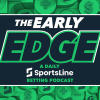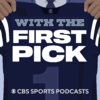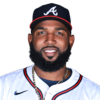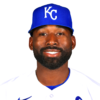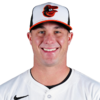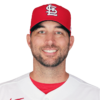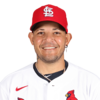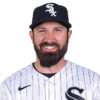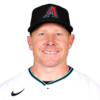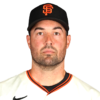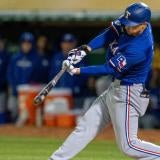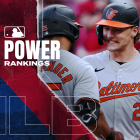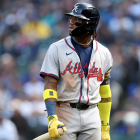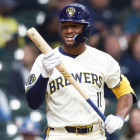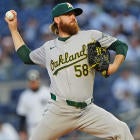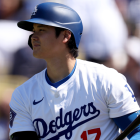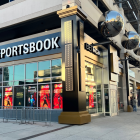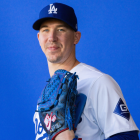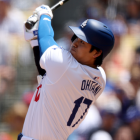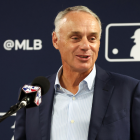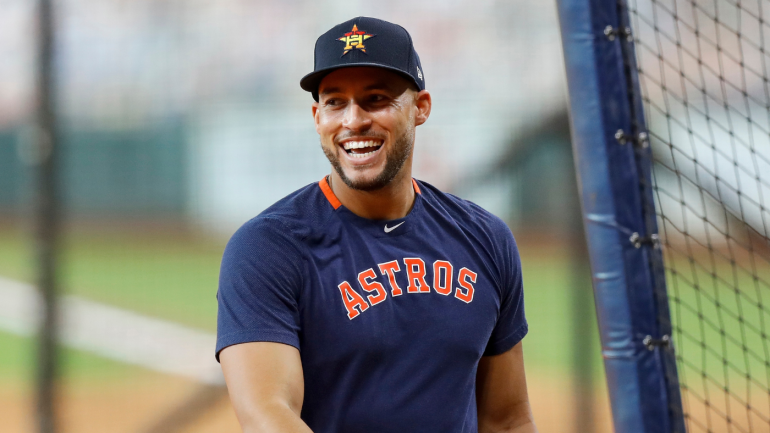
Last week, the Los Angeles Dodgers took down the Tampa Bay Rays in the 2020 World Series. For the Dodgers, that meant it was time to celebrate. For every other MLB team, it meant it was time to proceed with offseason plans. This winter figures to be a cruel one, with teams taking a fiscally conservative approach because of the global pandemic. Options were getting declined left and right in the days leading up to free agency, and there's likely to be a rash of non-tenders in early December.
Nonetheless, the free-agent market opened on Sunday, Nov. 1 and we wanted to honor the occasion by ranking and analyzing the 60 best free agents available this winter. Why 60 instead of the customary 50? Because the market is bigger than usual, and so too should be the list.
As always, keep in mind that these rankings are based in part on the impact players are expected to have on the field, and in part based on their expected contracts' annual average value, or AAV.
| 1 |
George Springer
Houston Astros CF
|
| Springer nets the top spot over Realmuto because the league has always shied away from megadeals for catchers. Only one backstop had an AAV exceeding $20 million in 2020, whereas eight outfielders did. On a talent basis, Springer is an above-average center fielder who has notched an OPS+ north of 120 in six of his seven seasons and who has homered 20-plus times in five of those seven seasons. Springer has done a remarkable job of cutting into his strikeout rate over the years without impacting his walk rate, and in 2020 he punched out in a career-best 17.1 percent of his plate appearances. The only thing Springer doesn't do, for the most part, is steal bases. He's succeeded in 61 percent of his career attempts, including 52 percent over the last five years, and should seldom be given the green light. It's unclear if or how teams will hold the Astros' sign-stealing scandal against Springer; unlike Jose Altuve, he appeared to be a willing recipient of the "bangs." Possible fits : Mets, Phillies, Astros | |
| 2 |
J.T. Realmuto
Philadelphia Phillies C
|
| Realmuto is coming off the second-best offensive season of his career, hitting .266/.349/.491 with 11 homers in 47 games. Perhaps the best way to sum up Realmuto is to acknowledge that he hit the ball 95 mph or harder as frequently in 2020 as Aaron Judge, Cody Bellinger, and Pete Alonso did ... and that he accomplished that feat while playing above-average defense behind the plate. Realmuto is more athletic than the standard backstop, and he has averaged seven steals per pop since his first full season. If you're looking for nits to pick, you can bemoan his single-digit walk rate, or his propensity for swinging and missing. Otherwise, the best a fearmonger can do is point to the dicey history of 30-something catchers. Realmuto, nearing his age-30 season, has enough going for him that he's going to get paid -- and he's likely going to be worth it. Possible fits : Phillies, Nationals, Mets | |
| 3 |
Trevor Bauer
Cincinnati Reds SP
|
| Heading into the 2020 season, Bauer's career numbers held an uncanny resemblance to those posted by A.J. Burnett through the same period of his career. He created separation this season, amassing a 1.73 ERA and a 5.88 strikeout-to-walk ratio over 11 starts and 73 innings. Bauer has long had the stuff and, according to his press clippings, the intelligence to be a frontline starter. He's now put together the results supporting that notion in two of the past three seasons. Can he keep it up? That's one of a few questions teams will have to answer, beginning with how he improved his spin rate just a few years after implying it was possible only through the use of substances . Another one is whether he's compatible on a long-term deal. Bauer fell out of favor in both Arizona and Cleveland, and he hasn't always covered himself in glory on social media . Weather changes moods just as sure as Sturgill changes words ; if Bauer wants to follow suit, changing his perception into a staff leader in every sense of the term, then he'll need to do more than continue to pitch well. Possible fits : Mets, Angels, Giants | |
| 4 |
DJ LeMahieu
New York Yankees 2B
|
| Despite playing seven seasons with the Rockies, LeMahieu nearly doubled his career home-run total (from 49 to 85) over his two with the Yankees. That's notable for a number of reasons, including his groundball tendencies and what might be described as his beneficial relationship with Yankee Stadium's dimensions. LeMahieu had the third-lowest launch angle in 2020 among hitters with 200-plus trips to the plate, ahead of only Raimel Tapia and Isiah Kiner-Falefa, who hit a combined four home runs. What's more is that, according to Statcast's calculations, LeMahieu has hit about a dozen more home runs than he was expected to based on his batted ball's trajectories. In other words, to sign LeMahieu is to gamble that his power profile might be perfectly tailored for Yankee Stadium in a way that will not translate to other parks. What should translate are his bat-to-ball and defensive skills and his ability to shoot the ball to right-center field. Those aspects aren't as sexy, and aren't as likely to be rewarded with a large sum. This, then, feels like a situation where LeMahieu should be valued more favorably by New York than anyone else; the question is whether the Yankees will bid against themselves. Possible fits : Yankees, Nationals, Angels | |
| 5 |
Marcus Stroman
New York Mets SP
|
| Here's a fun fact: Stroman has a lower career ERA+ than Bauer does. He's lower on the list because he's likely to receive a smaller contract for a number of reasons, beginning with his pitching style. Stroman isn't a high-strikeout or high-whiff pitcher; he's more of a contact manager who has coerced 60 percent or more groundballs in four of his past five seasons. As Dallas Keuchel, among others, have shown: strikeouts get you paid. Stroman's peaks haven't been quite as high as Bauer's, either. Oh, and Stroman also didn't pitch in 2020, opting out after he recovered from a torn calf muscle, albeit not before he had amassed enough service time to qualify for free agency. Teams were, presumably, not as amused by his Labor King antics as everyone else, but whatever; live, laugh, love, and know your worth. Stroman seems to know his, and it's equivalent to a good starting pitcher, even if he's the second-best one available. Possible fits : Mets, Braves, Angels | |
| 6 |
Marcell Ozuna
Atlanta Braves DH
|
| Ozuna bet on himself last winter by foregoing a multi-year pact in favor of a one-year deal. His reasoning was sound -- a big season would equal a bigger payday -- and at the time he had no way of knowing the league's economics would go to hell because of a global pandemic. Whatever the monetary value of the contract he signs is, Ozuna should take heart in knowing that he held up his end of the equation. He hit .338/.431/.636 with 18 home runs in 60 games. No free agent had a higher maximum exit velocity than Ozuna, and only one (Joc Pederson) tied or had a better average exit velocity. It's fair to wonder if this version of him is here to stay, just as it's fair to have concerns about his defense and his swing-and-miss tendencies. At the same time, he's consistently been an above-average hitter throughout his career, and most long-term contracts signed this winter will probably look like relative bargains two or three years down the road. Possible fits: Braves, Rangers, Nationals | |
| 7 |
Justin Turner
Los Angeles Dodgers 3B
|
| It's a shame Turner made the irresponsible and potentially harmful decision to return to the field after learning that he had tested positive for COVID-19 during Game 6 of the World Series, because this was as good of an opportunity as any for him to receive his flowers for an impressive seven-year run out west. He hits the ball hard, he commands the zone, and he's homered at least 20 times in three of the last five seasons. He's an All-Star caliber player with a lovely backstory. In due time, his mistake will become a footnote; for now, it's too fresh to overlook. Teams won't care, of course, but maybe they will in time -- it's at least possible that he's suspended to begin the 2021 season. Possible fits: Dodgers, Blue Jays, Nationals | |
| 8 |
Michael Brantley
Houston Astros DH
|
| If Brantley had recorded one more hit in 2017 -- literally one more -- he would have entered next spring as the only player to bat .300 or better in four consecutive seasons. Oh well. The warp and the woof of Brantley's game is that he's a consistent, professional hitter. He'll provide a good average, a healthy clip of walks, and 50-plus extra-base hits. Brantley was primarily used as a DH last season for the first time in his career; it probably won't be the last time. A team interested in maximizing his overall value should also consider parking him against lefties. For reasons unknown, he feels much older than he is: he'll turn 34 in the middle of next May. Possible fits: Nationals, Cardinals, White Sox | |
| 9 |
Andrelton Simmons
Los Angeles Angels SS
|
| How messed up was 2020? Simmons, arguably the best fielding shortstop of his generation, graded as a below-average defender, according to public-facing metrics. Now, to be fair, he played in only 30 games because of an ankle injury and his decision to opt-out late in the year. To be even more fair, reviewing his play suggests that he was largely the same rangy, big-armed, sure-handed defender he's always been, he just dropped a few pop-ups that he shouldn't have dropped and didn't have enough time to atone for it. Fair enough. Simmons did enjoy a bounce back season at the plate, though his only real skill there is making contact. He's posted a 98 OPS+ since the start of the 2017 season, but let's be real: you aren't signing him for his stick. Possible fits: Yankees, Reds, Phillies | |
| 10 | 
Masahiro Tanaka
New York Yankees SP
|
| It's hard to envision the Yankees allowing Tanaka to sign with another team. Why would they? He's been a reliable, above-average starter for years, and he just turned 32 on Nov. 1. Possible fits: Yankees | |
| 11 |
Marcus Semien
Oakland Athletics SS
|
| Semien failed to repeat or build upon his 2019, when he finished third in the American League in Most Valuable Player Award voting. Instead his OPS+, like many millennials this year, regressed into the 90s; a familiar place for it, as it has resided there in six of the past seven seasons. That isn't to suggest Semien is the same player he was back in 2014. He walks more frequently, punches out less frequently, and has worked hard to improve his defense. It's worth noting that his batting average on balls in play was well below his norm, suggesting his production ought to improve even if everything else remains the same. Semien turned 30 in September, so the length of his contract could eventually necessitate a position change. Possible fits: Reds, Yankees, Phillies | |
| 12 |
Jackie Bradley
Boston Red Sox CF
|
| Bradley Jr. isn't a freaky-deaky athlete in the vein of, say, Kevin Kiermaier or Ramon Laureano. What he is, though, is one of the best defensive center fielders in the game. He darts into space as if he's Mike Campbell, and he plays the position with an admirable precision -- to the extent that his routes appear preprogrammed. Bradley Jr. isn't a zero at the plate, either. The Red Sox allowed him to face more lefties the past two years, and he put up good numbers against them in 2020. (His next team will probably relegate him back to platoon status.) He's good for double-digit homers and an OPS over .760 against righties. That'll play just fine with his glove. Possible fits: Red Sox, Phillies, Diamondbacks | |
| 13 |
Joc Pederson
Los Angeles Dodgers LF
|
| Pederson chose an inopportune time to have a down season, as he posted an 84 OPS+ and homered just seven times in 43 games after a 36-homer performance the year prior. His ball-tracking metrics suggest there's no real reason to worry about him moving forward. Pederson's 93-mph exit velocity was in the top four percent in the majors, and he hit the ball at a 10-to-30-degree angle about as frequently as he had in the past. He's no longer a center-field-caliber defender, and you shouldn't play him against lefties if you can avoid it. Otherwise? He's a most-days starter who ought to provide 20-plus homers against righties. Possible fits: Angels, White Sox, Dodgers | |
| 14 |
Nelson Cruz
Minnesota Twins DH
|
| Cruz turned 40 in July, but you wouldn't have known it based on his offensive output. There's a natural tension between his age and his future prospects that's likely to leave him undervalued. He still clobbers the ball; he still walks; and he still is a positive force in the clubhouse. The closest thing to an age-related sign of decay is either a slight uptick in whiffs or a drop in exit velocity that left him in, uh, the 87th percentile. Cruz is mortal; he's going to stop hitting at some point, voluntarily or otherwise. But golly, sometimes it doesn't feel like that's true. Possible fits: Twins, White Sox, Rays | |
| 15 |
James McCann
Chicago White Sox C
|
| The two winters ago, the Tigers non-tendered McCann without hearing much backlash. He had frequently underperformed at the plate, and he was a liability behind it despite his strong arm. Now, after a pair of successful seasons with the White Sox, McCann will hit the market as one of the better backstops available. He continued his hot-hitting way from the year prior, stinging the ball time and again to bring his Chicago career line to .276/.334/.474 (114 OPS+) in 587 plate appearances. Equally as impressive were the gains McCann made behind the dish. He spent the winter working with Jerry Narron to improve his presentation on balls down, and it's clear that attention to his craft paid off, as he graded as an above-average framer for the first time in his career. It's fair to be skeptical about McCann's approach, or his newfound defensive prowess; it's also fair to concede that he looks like a different player than who he was a few years ago, and that he should be rewarded with a multi-year contact and a chance to be a team's No. 1 backstop. Possible fits: Rockies, Mets, Astros | |
| 16 |
Kevin Gausman
San Francisco Giants SP
|
| Gausman did well to reestablish himself as a starting pitcher with the Giants. He made some mechanical tweaks that allowed him to throw harder and within the zone more frequently; reintroduced the slider that he had previously mothballed; and embraced a 50/50 approach with his fastball and splitter. When he was at his best, he was stair-stepping with high fastballs and low splitters. He was at his best often enough to finish the shortened season with a 118 ERA+ and a 4.94 strikeout-to-walk ratio. Some team will give him a chance to do it again. Possible fits: Angels, Yankees, Rangers | |
| 17 |
Didi Gregorius
Philadelphia Phillies SS
|
| Take a glance at Gregorius' Baseball-Reference page, and you'll find that he had a 119 OPS+, 10 home runs, and a reduced strikeout rate in 2020, suggesting he's going to get paid. Dig a little deeper, though, and you'll find a trove of red flags concerning his offensive performance. To rattle them off: his average exit velocity was a career-worst 83.7 mph; he hit the ball 95 mph or harder as frequently as Jose Peraza and Tyler Wade did; his max exit velocity (104.7 mph) was five ticks below his '19 mark, and ranked 248th out of 257 qualified hitters; and so on. Maybe there's a sensible explanation here, but when a fair amount of a player's value is tied to hitting the ball hard ... and they're demonstrably not hitting the ball hard ... well, it's something to weigh. Possible fits: Angels, Yankees, Reds | |
| 18 |
James Paxton
New York Yankees SP
|
| There's an alternate reality out there where Paxton is in a better place after staying healthy and having his normal season. (Heck, we'd all be in a better place under those conditions.) Unfortunately, this aspect of his existence saw him lose three miles off his fastball and pitch just 20 innings before being shut down because of a flexor strain. There's no telling where the injury leaves him heading forward, meaning the range of potential outcomes here stretches from someone who is an above-average starter to someone who has a Tommy John surgery scar. Possible fits: Yankees, Nationals, Twins | |
| 19 |
Kolten Wong
St. Louis Cardinals 2B
|
| The Cardinals declined their $12.5 million option over Wong's 2021, making him a free agent a year after he received down-ballot MVP consideration. He's not likely to reach that level of production again, but he is a nifty little player who should land on his toes. Wong is a doubles-and-walks hitter who seldom whiffs and who frequently wears out the middle of the field. He's an above-average baserunner (and has been an effective basestealer historically) thanks to his intelligence more so than his speed. Wong is also a quality defender at the keystone, and he might have the best flip game in the majors. The Cardinals might be banking on landing similar production for less money; they might end up doing worse. Possible fits: Rockies, Athletics, Cleveland | |
| 20 |
Liam Hendriks
Oakland Athletics RP
|
| The beauty of fastball-slider relievers is you never know which one is going to break out or when. Hendriks is a good example. Over the last two seasons, he's thrown 110 innings of 1.79 ERA ball, and has done so while striking out 161 and walking 24. Was there any real indication that this was coming? Not so much. In the preceding three years (all spent with the Athletics, mind you), he had a 4.01 ERA and a 3.64 strikeout-to-walk ratio. Anyway, here's hoping Hendriks receives the payday he deserves, especially after he followed in the footsteps of Nathan Eovaldi and Brandon Morrow this postseason, going above and beyond and risking injury despite his looming date with free agency. Selflessness ought to be rewarded, after all. Possible fits: Phillies, Cardinals, Twins | |
| 21 |
Brad Hand
Cleveland Indians RP
|
| Cleveland declined the $10 million option held on Hand, which used to be viewed as a bargain. He doesn't throw as hard as he used to; his pitches generated fewer swings-and-misses than usual in 2020; and his batted-ball profile has shifted from ground- to air-based. All that said, did you look at his statline? There was no noticeable slippage or obvious decline in his performance. Rather, Hand posted the best ERA+ and strikeout-to-walk ratio of his career. Someone's going to entrust him with a high-leverage role; they just might get a bargain, too. Possible fits: Angels, Dodgers, Yankees | |
| 22 |
Adam Wainwright
St. Louis Cardinals SP
|
| Wainwright did some television work during the postseason. One has to think that he'll either return to the Cardinals, or that he'll go sign with FOX or ESPN or whomever. If this is the end, kudos to him for turning in one last good season -- and for finding a way to tie for the major-league lead in complete games at the age of 38. Possible fits: Cardinals, television booth | |
| 23 |
Charlie Morton
Tampa Bay Rays SP
|
| Morton has claimed that he would retire if the Rays did not pick up his option. They did not do so, meaning the ball is in his court. He's pitched well enough over the past few seasons to merit both a rotation spot and a ranking. Maybe a World Series loss will cause him to regain the itch? Possible fits: Rays, local softball league | |
| 24 |
Yadier Molina
St. Louis Cardinals C
|
| This is either an over- or an under-rank, based on whether teams keep the same "we're paying for future performance" energy they love to blab about with other players. Molina is, understandably given his age and the mileage he's put on his body from catching nearly every day for so long, deep into his decline phase. He hit the ball about as hard on average as Eric Sogard this season, and he's never been one to walk. That puts a low ceiling on his offensive upside, which in turn puts more pressure on accurately assessing his defensive value. How do you put a dollar amount on the soft skills Molina is believed to possess? Dunno, but good luck. Possible fits: Cardinals, Rockies, Tigers | |
| 25 |
Adam Eaton
Washington Nationals RF
|
| The Nationals declined their $10.5 million option on Eaton, making him a free agent an offseason earlier than anticipated. While he's coming off a replacement-level season, it's worth bearing in mind that it was only 41 games. Prior to 2020, he'd hit at least .270 and had reached base at least 36 percent of the time in six consecutive seasons. It's fair to reason that Eaton's injury history may have hastened a quicker decline than expected, but he's going to get an opportunity to redeem himself with someone, likely as a most-days starter in left. Possible fits: Cleveland, White Sox, Mariners | |
| 26 |
Brett Gardner
New York Yankees LF
|
| Gardner earned free agency by virtue of the Yankees declining his $10 million option. It's unclear if he'd consider playing for any team other than the one he's spent his entire career with, or if he'd just as soon retire. Should he make himself available, he ought to draw a crowd. Gardner, though 37, hit the ball harder and walked more frequently than he had in years. He's an attrition risk at this stage of the game, of course, but then, so is everyone else. Possible fits: Yankees, Cleveland, Marlins | |
| 27 |
Jake Odorizzi
Minnesota Twins SP
|
| Odorizzi accepted the qualifying offer a year ago, delaying his arrival to the open market by a winter. Alas, he's probably going to have to settle for another one-year pact after making trips to the injured list because of an intercostal strain, a chest contusion, and a blister. (At least none of them were arm-related?) Odorizzi has never had issues with durability in the past, and has demonstrated that he can be an effective mid-rotation starter on the strength of his fastball and splitter. He should be able to find work as someone's No. 3 or No. 4 starter, with the hope that he can have a good enough season to land a multi-year deal around this time in 2021. Possible fits: Twins, Braves, Nationals | |
| 28 |
Taijuan Walker
Toronto Blue Jays SP
|
| Walker missed almost the entirety of the 2018 and 2019 seasons, meaning his 11-game stint this past season (split between Seattle and Buffalo, uh ... Toronto) represented his first real opportunity to demonstrate the effectiveness of his reworked arm action. He made the most of the chance, averaging five innings per pop while accumulating a 2.70 ERA and a 2.63 strikeout-to-walk ratio. Walker's fastball clocked in around 93 mph and remained his best bat-missing weapon, as it evaded lumber 23 percent of the time -- or, for comparison's sake, about as frequently as the heaters thrown by Tyler Glasnow, Max Fried, and Mike Clevinger. He doesn't have another big-time bat misser in his arsenal, but he does have the willingness to throw most of his other pitches, especially his splitter and curve, to lefties and righties alike. While that doesn't sound like much, it does give him the ability to show each individual batter three or four looks. Provided he stays healthy, he should slot in as someone's fourth starter. Possible fits: Braves, Blue Jays, Giants | |
| 29 |
Mike Minor
Oakland Athletics SP
|
| From the surface, Minor's season looks pretty bad. He had a 5.56 ERA; he lost nearly two miles per hour off his heater; and he yielded 11 home runs in 56 innings. For as worrisome as all of that is, there are some reasons to think he can be a viable back-end starter heading forward. That velocity loss didn't render his fastball worthless; opponents actually posted a lower batting average (.230) and higher whiff rate (24.6 percent) than they did the previous season. His strikeout, walk, and hit rates were all in line with what he did in 2019, and his exit velocity increased all of 0.6 mph. His biggest issue, then, was the long ball -- and six of the 11 came on sliders, suggesting that the key for him is either tightening the pitch, moving away from it, or having better luck next year. Given Minor's recent history, he's worth a gamble. Possible fits: Angels, Nationals, Cardinals | |
| 30 |
Corey Kluber
Texas Rangers SP
|
| Kluber's stint with the Rangers lasted all of one inning, as he required season-ending shoulder surgery. He's thrown fewer than 700 pitches since Opening Day 2019, but it's a certainty that some team will sign him with the hope that he can bounce back. Kluber was one of the top pitchers in baseball before his recent health woes, so he's worth taking a shot on. Possible fits: Rangers, Dodgers, Braves | |
| 31 |
Tommy La Stella
Oakland Athletics 2B
|
| La Stella didn't receive as much fanfare this season as he did in 2019, when he homered 16 times in 80 games and missed an All-Star Game appearance because of a fractured leg, but according to OPS+ this was the superior campaign. He's trimmed his strikeout rate to barebone levels (down to 5 percent this year) without it impacting his discipline or the adaptability of his swing, as he's still able to hit the ball hard (relative to himself) across planes. A team signing La Stella is doing so because of the contributions he can make on the offensive side, particularly with his average and on-base percentage against right-handed pitchers. He's limited on the defensive side because of a substandard arm and a general lack of twitchy athleticism. La Stella can "play" second or third, you just aren't going to feel good about it until he's due to bat again. Possible fits: Athletics, Nationals, Marlins | |
| 32 |
Cesar Hernandez
Cleveland Indians 2B
|
| Hernandez, who was non-tendered by the Phillies last winter, accumulated nearly as many Wins Above Replacement in 2020 as he had in either of his previous two seasons. His game remained mostly unchanged. He'll take his walks; he'll hit balls into the gap (he's developed into a superior hitter against righties, and could stand to be platooned versus lefties); and he'll play mostly fine defense, albeit with an occasional glitch or two. If there was one interesting development in Hernandez's game, it's that Cleveland didn't permit him to attempt a stolen base. He'd attempted at least 10 steals in every one of the past five seasons, so it's worth monitoring to see if his next employer gives him back the green light. (He's plenty quick, by the way, but he's been known to get spotty jumps, resulting in a substandard 69.6 percent career success rate.) Possible fits: Athletics, Cleveland, Cardinals | |
| 33 |
Robbie Grossman
Oakland Athletics LF
|
| Grossman made the most of the truncated year, transforming himself from a low-wattage, walks-only hitter into someone whose isolated slugging (.241) was higher than his previous season's batting average (.240). His gains in exit velocity, launch angle, and power output don't appear to be the result of a small sample; rather, they're the product of him adding a leg kick and becoming more pull-happy (from 29.2 percent in 2019 to 46.1 percent in 2020). Presuming some of that sticks, Grossman ought to appeal to teams as a low-cost, switch-hitting option who can handle either corner-outfield spot or the designated hitter role. Possible fits: Cleveland, Athletics, Astros | |
| 34 |
Pedro Baez
Los Angeles Dodgers RP
|
| Perception is a powerful, often misleading thing. Take Baez for example. He's been a consistent, reliable, and valuable high-leverage reliever for as long as he's been in the Show, but your odds of convincing someone of that truth are akin to your chances of teaching a wildebeest how to play Connect Four. To wit, Baez is one of four relievers who have had an ERA+ exceeding 130 in each of the last five seasons. Those other three have all been entrusted with closer gigs and have accumulated more than 100 saves apiece. Not Baez, who is best known for his agonizing pace and his tendency to give up backbreaking home runs in October. To make matters worse, his velocity and his strikeout and walk rates all worsened in 2020. It's possible Baez's struggles were the product of an odd year; those woes, plus his danged perception, could cost him. Possible fits: White Sox, Angels, Mets | |
| 35 |
Alex Colome
Chicago White Sox RP
|
| Colome has bounced around the league a fair amount over the last several years, which has obscured his level of production. Since moving to the bullpen on a full-time basis in 2016, he has the fifth-best ERA+ and the third-most saves among relievers with 200-plus appearances. Colome's formula for success is simple: he throws a lot of upper-80s cutters and complements it with enough mid-90s fastballs to keep hitters off-balance. It isn't always pretty, and sometimes he allows too much hard contact to feel at ease, but it's consistently worked for him. Expect him to continue to get high-leverage chances, and perhaps save opportunities, until it doesn't. Possible fits: Phillies, Cardinals, Reds | |
| 36 |
Blake Treinen
Los Angeles Dodgers RP
|
| Treinen split the uprights between his last two seasons. He was adequate; not dominant, like he was in 2018, and not a mess, as with 2019. Treinen's game is "bend, don't break." The opposition hit better than .300 against his trademark sinker, yet the damage ratio was low enough that he was able to keep runs off the board. (Oddly, for someone who allowed so many singles and generated more than 60 percent grounders, he had a below-average double-play rate.) Dodgers skipper Dave Roberts used Treinen against right-handers more than usual, and that was a wise play given his career numbers. He'll likely land a high-leverage role based on his reputation, but suitors should accept him for what he is, not what he was once upon a time. Possible fits: Dodgers, Angels, White Sox | |
| 37 |
Trevor May
Minnesota Twins RP
|
| Bill James once theorized that it's better for a player to start hot than to finish hot, even if their statistics end up the same. James' thinking was that the player who started hot would have better-looking numbers throughout, which would in turn buy them more leeway from management and fans. May is evidence that the inverse is true when it comes to paths to free agency: in his first three seasons in the Show, he posted a 5.14 ERA and looked like a bust; in his last three, he accumulated a 3.19 ERA and gained recognition as a legitimate high-leverage arm. Part of his improvement was a permanent move to the bullpen, where he's continued to seek the ideal pitch mix. Last season, that meant shelving his curveball and throwing more than 80 percent fastballs and sliders. It's an effective combination for missing bats; he's still home-run prone, however, which could prevent him from ever being viewed as a worthy closing option. Possible fits: Phillies, Reds, Rays | |
| 38 |
Trevor Rosenthal
San Diego Padres RP
|
| A year ago, it would've been fair to assume Rosenthal's big-league career was nearing its conclusion. He had walked 26 batters in 15 innings, and had one of the more embarrassing stretches of pitching in recent memory, failing to record an out in his first four appearances of the season. Rosenthal had a remarkable turnaround in 2020, completing the year with a 1.90 ERA and issuing just eight walks in 23 innings. He relied primarily on a 98-mph fastball and a slider, both of which missed bats more than 36 percent of the time. There is some reason to be skeptical about him sustaining that level of performance: he is, after all, only a year removed from a disaster of a season; and he threw more than 11 percent of his pitches in the "meatball" zone, according to Statcast. You might reason that Rosenthal's stuff is good enough to live there without being smoked, but his exit velocity ranked in the 14th percentile. Possible fits: Angels, Padres, Mets | |
| 39 |
Jonathan Schoop
Detroit Tigers 2B
|
| Schoop won't turn 30 years old until next October, meaning he could frequent the bottom half of this list for winters to come. He's the same player he's been all along. He can hit for a decent average; he's able to launch 20-plus homers if given enough playing time; and he's an above-average fielder, complete with a much stronger arm than the standard second baseman. The catch is that Schoop has an abysmal approach. His eagerness to swing doesn't just limit his on-base potential and fuel his strikeout rate, it also leaves him making weaker contact on average than someone with his power output should. Schoop is good enough to continue getting starting jobs for the next few years, but don't expect him to stick in any one place for long. Possible fits: Red Sox, Athletics, Marlins | |
| 40 |
Yasiel Puig
Cleveland Indians RF
|
| Puig isn't the only individual on this list who did not play during the 2020 season, but he is the only individual who did not play because he went unsigned. He did reportedly reach an agreement with the Braves during the summer; that deal subsequently fell apart when he tested positive for COVID-19. There had been talk within the industry that Puig was taking teams' criticism of his maturity seriously, and that he was making a real effort to change. Assuming there's some validity to that, and assuming he's healthy and won't show too much rust from the missed year, then he could prove to be a savvy pick-up and an under-rank. Possible fits: Orioles, Marlins, Astros | |
| 41 |
Jurickson Profar
San Diego Padres 2B
|
| Profar was once one of the top prospects in baseball. Injuries and wasted opportunities took their toll on his stock, however, and he's been reduced to journeyman status in recent times, playing for a different team in each of the past three seasons. When he joins team No. 4 this winter, it'll likely be as a utility type who can ping between left field and second base. He played more outfield than infield last year, and it shouldn't surprise anyone if that remains the case moving forward -- especially if he experiences another bout of throwing problems, the way he did in 2019. Profar hits just enough to envision him starting most days. This isn't what people used to envision from Profar's career, but whatever keeps the direct deposits flowing. Possible fits: Cleveland, Tigers, Orioles | |
| 42 |
Mitch Moreland
San Diego Padres 1B
|
| The Padres declined Moreland's absurdly cheap ($3 million) option for next season, making him the last player to join the list. It wasn't the low cost alone that made it a surprise move; he's coming off a career-best season that saw him post a 139 OPS+ and hit 10 home runs in 42 games. Obviously Moreland isn't going to repeat his 2020, but he's a solid little second-division option who'll reach base 32 percent of the time and swat 15-plus homers. There are worse ways to spend a couple million. Possible fits: Rockies, Nationals, Tigers | |
| 43 |
C.J. Cron
Detroit Tigers 1B
|
| Cron played in just 13 games before he required season-ending knee surgery. He's still one of the top first basemen on the market, a statement that says more about the paucity of good options available than it does about him. Cron is a serviceable option, mind you, one who can deliver 20-plus homers and an OPS+ in the 100-110 range. Alas, "serviceable" first basemen tend to change uniforms frequently. Cron sure has, as he's played with four teams the past four years. Expect that to become five in five soon enough, and then six in six, and then .... Possible fits: Nationals, Rangers, Rockies | |
| 44 |
Brad Miller
St. Louis Cardinals DH
|
| Miller is a dilemma. There's no doubting his bat, or his ability to provide value as a most-days DH. Dating back to the start of the 2018 season, a period that has seen him suit up for five teams, he's amassed a 112 OPS+ with 27 home runs in 595 plate appearances. There's some downside to his stick -- he swings and misses a lot, and he's ineffective against left-handed pitching -- but micromanage his plate appearances and he'll reward you with enough pop and walks to make it worth the hassle. What makes Miller's situation complex is that, unlike most DH types, he's a solid athlete who can serve as an emergency option around the infield. Unfortunately, he isn't a good defender by any definition, in part because of his inconsistent throwing mechanics. Whichever team employs Miller has to find the sweet spot between overexposing him defensively and wasting the versatility that separates him from his peers. Possible fits: White Sox, Rangers, Cubs | |
| 45 |
Carlos Santana
Cleveland Indians 1B
|
| Santana is a limited defender who'll turn 35 early next season and who just had the worst offensive campaign of his career, as judged by OPS+. What keeps him rankable is the belief that he underperformed. In addition to walking more than he struck out for the second time in three years, he hit the ball 95 mph or harder as frequently as Michael Brantley did. Santana also tied Fernando Tatis Jr. with more than 20 "hard outs" -- that doesn't mean he's on Tatis' tier, obviously, but it does suggest he might have better results in 2021 if he can just maintain. Possible fits: Nationals, Rockies, Rangers | |
| 46 |
Shane Greene
Atlanta Braves RP
|
| Timing is everything. Had Greene reeled off this two-season run (during which he accumulated a 199 ERA+ and recorded 23 saves) in, say, 2006 or 2007, then some team would be about to offer him a three- or four-year pact worth $20 million, easy. Teams these days are more likely to dig deeper, and more likely to conclude that Greene's success feels ... well, tenuous. Both his strikeout and walk rates went in the wrong direction last season, and each of his three primary pitches were less likely to generate a swinging strike than in the previous year. You can dig deeper and find reasons for discomfort on a granular level, too. For instance, opponents hit better than .260 against both Greene's sinker and slider, two pitches that accounted for nearly 60 percent of his total offerings. Oh, and don't forget about his career .820 OPS when faced with left-handed hitters -- Lord knows opposing managers won't. Greene's still going to have suitors because of his topline numbers, but there's a real chance he flunks out of high-leverage work. Possible fits: Astros, White Sox, Marlins | |
| 47 |
Mark Melancon
Atlanta Braves RP
|
| On the one hand, it's easy to envision Melancon cutting and curving his way to another solid season or two. On the other, his whiff rate cratered this year, to the extent that it's a little worrisome. Batters went from missing on more than a quarter of their swings against his pitches to missing on less than 20 percent. Melancon still generated a lot of weak contact on grounders, and that's more or less the key to him remaining employable heading forward. Possible fits: Braves, Angels, Phillies | |
| 48 |
Kirby Yates
San Diego Padres RP
|
| You have to feel for Yates, who likely entered the year dreaming of signing a lucrative, multi-year contract this winter. Those dreams were dashed quickly, as he made just six appearances before undergoing season-ending elbow surgery to deal with some bone chips. When he's been healthy, he's been highly effective over the last three-plus seasons, compiling a 2.55 ERA and 14 strikeouts per nine innings as a member of the Padres. Yates will probably have to settle for a one-year deal, maybe with a player or vesting option attached, to prove that he's back to good. Then, maybe, he can get the fat free-agent deal that his recent work merits. Possible fits: Red Sox, Phillies, Angels | |
| 49 |
Ken Giles
Toronto Blue Jays RP
|
| Giles underwent Tommy John surgery in October, meaning he's unlikely to pitch at any point in 2021. The year off will damper his market, but it shouldn't eliminate it. You can bet on some team signing Giles to a one-plus-one deal this winter with the hope that he'll rest and rehab for a year before returning in 2022 as a hard-throwing, if at times frustrating late-inning option. Possible fits: Rays, Red Sox, Dodgers | |
| 50 |
Marwin Gonzalez
Minnesota Twins 3B
|
| Although Gonzalez finished below the replacement-level line in 2020, he should be able to find work as someone's superutility player. He had an above-average exit velocity; he walked; he continued to be a skilled, versatile defender; and so on. Gonzalez, a switch-hitter, has been better against lefties than righties in recent years. Maybe his next team will use him as a short-sided platoon option? Whatever the case, don't be surprised if he proves to be a value. Possible fits: Orioles, Rangers, Cubs | |
| 51 |
Enrique Hernandez
Los Angeles Dodgers 2B
|
| Hernandez's value to a team is straightforward. He's a fun-loving presence, a versatile defender, and a capable batsman against left-handed pitching. It's theoretically possible that some team will give him a chance as an everyday player, just to see if there's something more there ... but from this vantage point, his optimal role is the one he's been occupying for the Dodgers. Possible fits: Dodgers, Cubs, Twins | |
| 52 |
Jose Quintana
Chicago Cubs RP
|
| Quintana's 2020 was all but a wash, as he was limited to just four appearances by thumb and lat issues. He hasn't been as effective as he was with the White Sox, yet since the start of the 2018 season he has a 98 ERA+ and a 2.75 strikeout-to-walk ratio. Some team will gladly give him a low-cost, one-year deal and see if he can occupy a spot at the back of the rotation. Possible fits: Giants, Angels, Braves | |
| 53 |
Trevor Cahill
San Francisco Giants SP
|
| There are a couple ways to bargain hunt. One is to identify players who can make changes to their game, be it mechanical or strategical in nature; another is to identify pitchers who may have already made those alterations, but who flew under the radar. Cahill fits in the second camp. In his 11 appearances with the Giants, he threw a career-high rate of changeups and curveballs, to the extent that they accounted for more than half of his offerings. He also added a crossfire element to his delivery, creating more deception, and he became a flyball pitcher, with his groundball percentage dipping to a career-low 33 percent (it had never before finished below 45 percent). Cahill was still a little wild, so it's possible his best fit is in relief. Considering that he appeared to be on his way out of the league last winter, that designation is a big win for him -- and, potentially, for whichever team signs him to a low-cost, one-year deal this offseason. Possible fits: Astros, Red Sox, Twins | |
| 54 |
Drew Smyly
San Francisco Giants SP
|
| Between Gausman and Smyly, the Giants struck gold on their restoration starters. As with Gausman, Smyly improved his velocity this season, increasing his heat by more than two full ticks. That, plus the additional spin he was able to impart, allowed him to post the best strikeout rate of his career. Smyly did allow a lot of hard contact when batters were able to connect, even though the Giants did well to prevent overexposure by limiting him to 20 batters or fewer in all but one of his appearances. Someone is going to find out if he can sustain those gains. Possible fits: Giants, Braves, Angels | |
| 55 |
Shin-Soo Choo
Texas Rangers LF
|
| Choo has stated that he intends to play two more seasons. Whether or not he receives an opportunity in 2022 is to be seen, but he still possesses many of the attributes that have allowed him to play into his late-30s: a keen eye, an ability to hit the ball hard (albeit less frequently than at the peak of his powers); and an aptitude for the game that has enabled him to steal more bases than he should with his below-average speed. Other signs of age-related decay are present -- such as his increased likelihood to whiff and to pop-up -- and he's no more of a presence defensively or against left-handers than he was when he first joined the Rangers, way back in 2014. Even so, he's a fine candidate to slot in as a most-days DH and as a clubhouse leader. Possible fits: Athletics, Rangers, Astros | |
| 56 |
Robbie Ray
Toronto Blue Jays SP
|
| Ray overhauled his mechanics prior to last season, shortening his arm stroke in the same way that has proven beneficial for other pitchers, including Lucas Giolito. It wasn't so fruitful for Ray, however, and he ended up walking nearly a batter per inning. He gained velocity and spin, and he still missed bats with his slider, so expect some team to pick him up with the thought that another winter of refinement could see him resume being a volatile mid-rotation arm. Possible fits: Reds, Cubs, Dodgers | |
| 57 |
Yusmeiro Petit
Oakland Athletics RP
|
| Petit might be the closest thing baseball has to a "utility pitcher," or someone who has filled every capacity one can fill shy of closing. He's started; he's worked in a multi-inning role; and this season he was used almost as a right-handed specialist -- an odd decision on Oakland's part, since he tends to pitch well against both hands, and he was actually worse versus righties. Petit doesn't throw hard and he's nearing his 36th birthday, so he figures to come cheaply. That, plus his versatility, makes him a fit on almost every roster. Possible fits: Astros, Rays, Red Sox | |
| 58 |
Tyler Clippard
Minnesota Twins RP
|
| Clippard appeared to be at the end of his line back in 2017, when he had disastrous stints with both the Yankees and the Astros that saw him yield 10 home runs in 50 innings. (He snuck a 10-inning, zero-homer White Sox cameo in there, too.) Three seasons later, he's cracked the top 60. How could he not? He's posted a 139 ERA+ and a 4.17 strikeout-to-walk ratio over his last 156 innings. Clippard is still homer-prone, of course, and he's still dependent on generating soft air contact. He doesn't throw hard and he's seldom GIF'd, but at this point he has to once again be viewed as a reliable setup man who is likely to remain undervalued until he retires. Possible fits: Angels, Braves, Phillies | |
| 59 |
Tony Watson
San Francisco Giants RP
|
| Watson lost nearly four ticks off his fastball in 2020, with his average velocity plummeting from 93 mph to 89.5 mph. It made no difference to his bottom-line numbers. Part of the reason he remained effective was a new dependence on his changeup. Watson used his cambio as his primary offering, throwing it a career-high 45 percent of the time. That proved to be a wise decision, as the changeup missed more bats and suppressed quality contact better than his sinker did. Another promising aspect to Watson's season was his continued competence versus right-handed batters, which may not be expected based on his low three-quarters release point. Teams don't tend to cast soft-throwing contact managers in high-leverage roles, but Watson should be an asset in middle relief provided his downed velocity isn't stemming from an injury. Possible fits: Phillies, Astros, Blue Jays | |
| 60 |
Anthony Bass
Toronto Blue Jays RP
|
| Players who suit up for eight organizations before celebrating their 33rd birthday seldom reach big-league free agency, let alone rank in the top 60. Bass is the exception. Over the last three seasons, he's compiled a 127 ERA+ and a 2.69 strikeout-to-walk ratio in 89 innings; the comparison isn't perfect for a few reasons, but Daniel Hudson received a multi-year deal in winter 2019 after posting a 139 ERA+ and a 2.56 strikeout-to-walk ratio in his previous 119 frames. Bass is reliant upon two pitches, a mid-90s fastball and a swing-and-miss slider, yet he's been effective versus lefties and righties alike throughout his career. He's also an extreme groundball pitcher whose sweet-spot percentage was the best in the majors; in other words, almost all of the contact he allowed was either hit into the earth or popped up. That'll play. Possible fits: Dodgers, Phillies, Marlins | |



